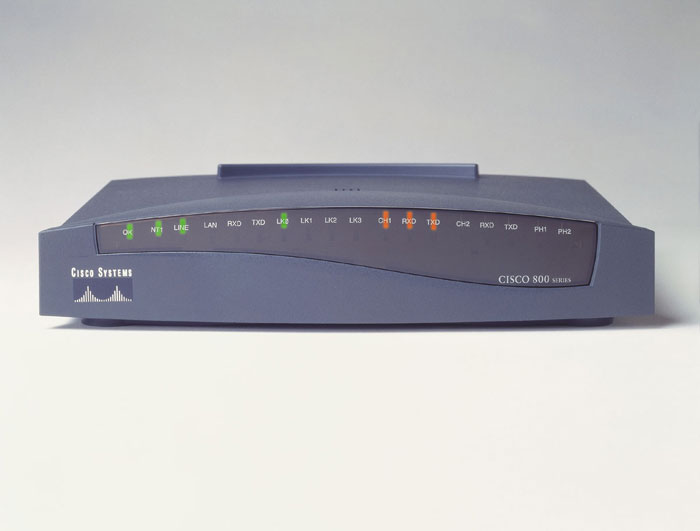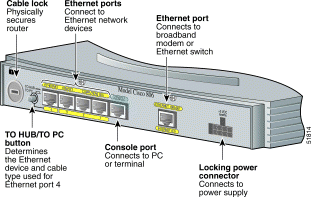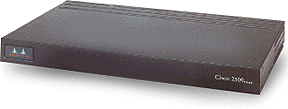
 |
The Cisco 806 router, as mentioned above, is designed with the SOHO (Small Or Home Office) market in mind. Though these routers don't boast the features of their larger cousins, they are still very capable routers. The WAN side of the router consists of one 10baseT ethernet port, which would allow the modem to easily interface with cable modems and dsl modems, for instance. Additionally, the 806 has one LAN 10baseT ethernet port, which is hubbed out to 4 ports internally. This configuration would make it easy to connect four computers to the modem with a minimum of fuss. You could also connect four networks, but this is somewhat limiting since these four ports are hubbed and not switched and are only running at 10MB/sec. |
| The features of a Cisco 806 router more than make up for the lack of switched, 100baseT LAN connectivity. Its main strongpoint is that it runs Cisco IOS, which allows configurability beyond most other SOHO router solutions. In fact, Cisco has sample configurations for download that allow easy connections to ATM, ISDN, DSL and cable modems, as well as many other options. Additionally, as most routers, the 806 offers NAT (network address translation) and DHCP. The Cisco 806 also features a built-in firewall, VPN support, a RISC processor, and many other features. |  |
 |
The next router on our list is the Cisco 2520 router. This router is more aimed at medium sized businesses. As such, portwise it offers 1 10baseT ethernet, 2 low-speed asynchronous/synchronous serial, 2 high-speed sycnhronous serial and 1 ISDN BRI port in its default configuration. This allows for a breadth of connecivity options not available in the 800 series. |
| The features of the Cisco 2520 router are replete with options for a medium network infrastructure. For instance, the high speed serial ports are capable of up to 4Mbps operation each in full duplex or half-duplex, as well as NRZ and NRZI encoding. The two low speed serial ports are capable of 115.2kbps operation in synchronous or asynchronous mode. It can run Cisco IOS, supports dial-on-demand routing (DDR), Synchronous Data Link Cotrol (SDLC), transport (STUN), SDLC-to-LAN conversion (SDLLC) and much more. The software features are even more numerous, including considerable support for routing, security and management across several different protocol stacks. |  |